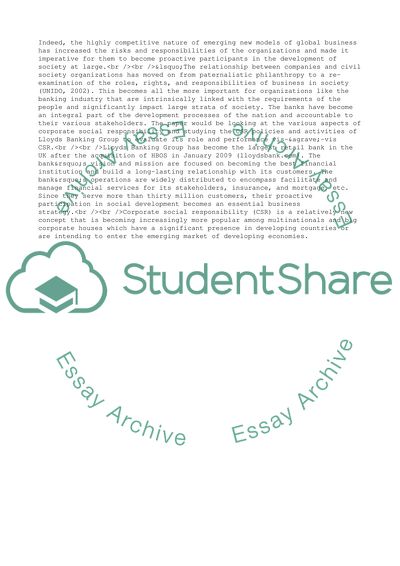Cite this document
(Lloyd Bank's Approach to CSR Term Paper Example | Topics and Well Written Essays - 1500 words - 28, n.d.)
Lloyd Bank's Approach to CSR Term Paper Example | Topics and Well Written Essays - 1500 words - 28. https://studentshare.org/management/1742660-management
Lloyd Bank's Approach to CSR Term Paper Example | Topics and Well Written Essays - 1500 words - 28. https://studentshare.org/management/1742660-management
(Lloyd Bank'S Approach to CSR Term Paper Example | Topics and Well Written Essays - 1500 Words - 28)
Lloyd Bank'S Approach to CSR Term Paper Example | Topics and Well Written Essays - 1500 Words - 28. https://studentshare.org/management/1742660-management.
Lloyd Bank'S Approach to CSR Term Paper Example | Topics and Well Written Essays - 1500 Words - 28. https://studentshare.org/management/1742660-management.
“Lloyd Bank'S Approach to CSR Term Paper Example | Topics and Well Written Essays - 1500 Words - 28”. https://studentshare.org/management/1742660-management.


